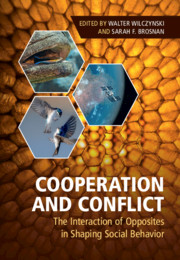Part I - Broad Insights from Political Science to Molecular Behavior
Published online by Cambridge University Press: 08 February 2021
Summary

- Type
- Chapter
- Information
- Cooperation and ConflictThe Interaction of Opposites in Shaping Social Behavior, pp. 5 - 86Publisher: Cambridge University PressPrint publication year: 2021

